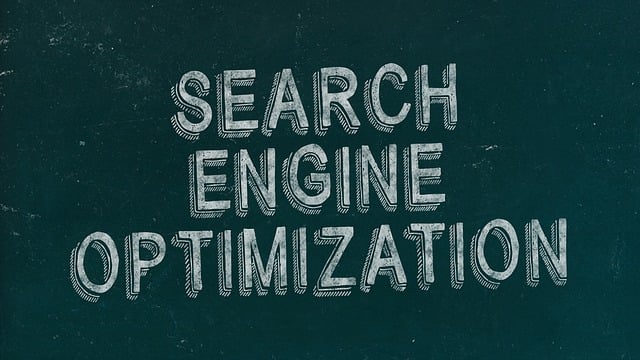AI automation is transforming the truck repair industry by offering strategic growth opportunities through machine learning algorithms that analyze data from sensor readings, maintenance records, and historical repairs. This enables predictive maintenance, reduces unexpected breakdowns, and minimizes repair costs. AI-powered diagnostic tools identify common failure patterns, streamlining repairs and enhancing service quality. Adopting these strategies equips businesses to stay competitive in a rapidly evolving market. A strategic approach involves assessing operations, defining use cases, choosing suitable AI tools, conducting pilot projects, integrating AI into daily ops, training employees, and regularly optimizing processes. Success stories and future prospects indicate promising advancements in AI-driven diagnostics and potential for fully automated repair facilities.
“Revolutionize your truck repair processes with AI automation—the game-changer for the trucking industry. This article explores how AI can transform time-consuming tasks into streamlined operations, enhancing efficiency and accuracy. We’ll guide you through ‘AI growth strategies for truck service businesses’, offering a step-by-step approach to implementation. Discover success stories and future prospects in ‘Case Studies and Future Prospects’, as we delve into the potential of AI automation to elevate your truck repair business.”
- Understanding AI Automation: The Potential for Truck Repair Businesses
- Implementing AI Growth Strategies: Step-by-Step Guide
- Case Studies and Future Prospects: Success Stories in Truck Service Automation
Understanding AI Automation: The Potential for Truck Repair Businesses

AI automation is transforming industries, and truck repair processes are no exception. By implementing intelligent systems, truck service businesses can significantly enhance their efficiency and profitability. AI growth strategies for these enterprises focus on leveraging machine learning algorithms to analyze vast amounts of data from various sources—sensor readings, maintenance records, and historical repairs—to predict potential issues before they occur.
This proactive approach allows technicians to conduct preventive maintenance, reducing unexpected breakdowns and costly repairs. Moreover, AI-powered diagnostic tools can identify patterns in common failures, streamlining the repair process and improving overall service quality. As AI continues to evolve, truck repair businesses that adopt these technologies will be better equipped to stay competitive in a rapidly changing market.
Implementing AI Growth Strategies: Step-by-Step Guide

Implementing AI Growth Strategies: Step-by-Step Guide for Truck Service Businesses
1. Assess Current Processes and Identify Pain Points: Begin by thoroughly understanding your truck service business operations. Pinpoint inefficiencies, repetitive tasks, or areas where human error is prevalent. This could include diagnostic processes, parts inventory management, or scheduling maintenance. Recognizing these pain points will guide your AI integration strategy.
2. Define Specific Use Cases for AI: Based on the assessment, select initial use cases for AI implementation. Common applications include predictive maintenance, automated parts ordering, and intelligent scheduling. For instance, AI algorithms can analyze sensor data from trucks to predict when maintenance is required, reducing downtime. Prioritize these use cases based on their potential impact on efficiency and cost savings.
3. Choose the Right AI Tools and Technologies: Explore various AI solutions tailored for trucking and automotive industries. Consider machine learning platforms, natural language processing (NLP) tools for document analysis, computer vision systems for visual inspections, or robotics process automation (RPA) to automate routine tasks. Select tools that align with your defined use cases and integrate seamlessly with existing systems.
4. Pilot AI Projects: Start with small-scale pilot projects to test the waters. Implement AI solutions in a controlled environment, such as a specific workshop or department. Monitor and evaluate the results, gathering feedback from employees to refine the system. This iterative approach ensures that the AI models are trained accurately and aligned with your business needs.
5. Integrate AI into Daily Operations: Once successful pilot projects are completed, gradually roll out AI across your truck service business. Ensure proper training for employees to use new AI-powered tools effectively. Establish clear communication channels to address any concerns or challenges that arise during the transition. Regularly review and optimize AI processes to maintain efficiency and adapt to changing business demands.
Case Studies and Future Prospects: Success Stories in Truck Service Automation

The integration of AI automation in truck repair processes has been a game-changer, with numerous success stories already emerging across various regions. These case studies highlight how AI growth strategies can significantly benefit truck service businesses. For instance, leading fleet management companies have implemented AI-driven diagnostic tools that accurately identify and predict mechanical issues in trucks, enabling proactive maintenance and reducing downtime.
Looking ahead, the future prospects for AI automation in truck service industries are promising. As technology continues to evolve, AI algorithms will become more sophisticated, enhancing precision and efficiency. This advancement could lead to the development of fully automated repair facilities, where robots perform routine tasks, while AI specialists focus on complex issues, ultimately streamlining operations and fostering growth in this sector.
AI automation is transforming the landscape of truck repair, offering unprecedented efficiency and cost savings. By implementing AI growth strategies, truck service businesses can streamline processes, reduce downtime, and enhance customer satisfaction. The case studies presented demonstrate that embracing AI automation is a game-changer, setting the stage for a vibrant future in truck service industries. Adopting these AI growth strategies will be key to staying competitive and leveraging the potential of this innovative technology.
